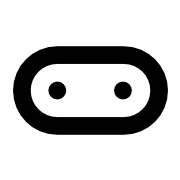Introduction to Interfaces in TypeScript
Interfaces in TypeScript are powerful tools that allow developers to define the structure of objects. They enable type-checking and help ensure that objects conform to specific shapes, which can prevent runtime errors and improve code quality. This guide provides a simple example of how interfaces work, demonstrating their utility in defining object properties and types.
Key Features:
- Type Safety: Interfaces enforce type-checking, ensuring that objects passed to functions have the required properties.
- Optional Properties: Interfaces can define optional properties, allowing for flexible object structures.
- Excess Property Checks: TypeScript checks for excess properties in object literals, helping to catch potential bugs early.
Use Cases:
- Defining Object Shapes: Use interfaces to define the expected structure of objects in your applications.
- Creating Configurations: Interfaces can be used to create configuration objects with optional properties, making your functions more versatile.
- Type Annotations: Enhance code readability and maintainability by using interfaces for type annotations in function parameters and return types.

